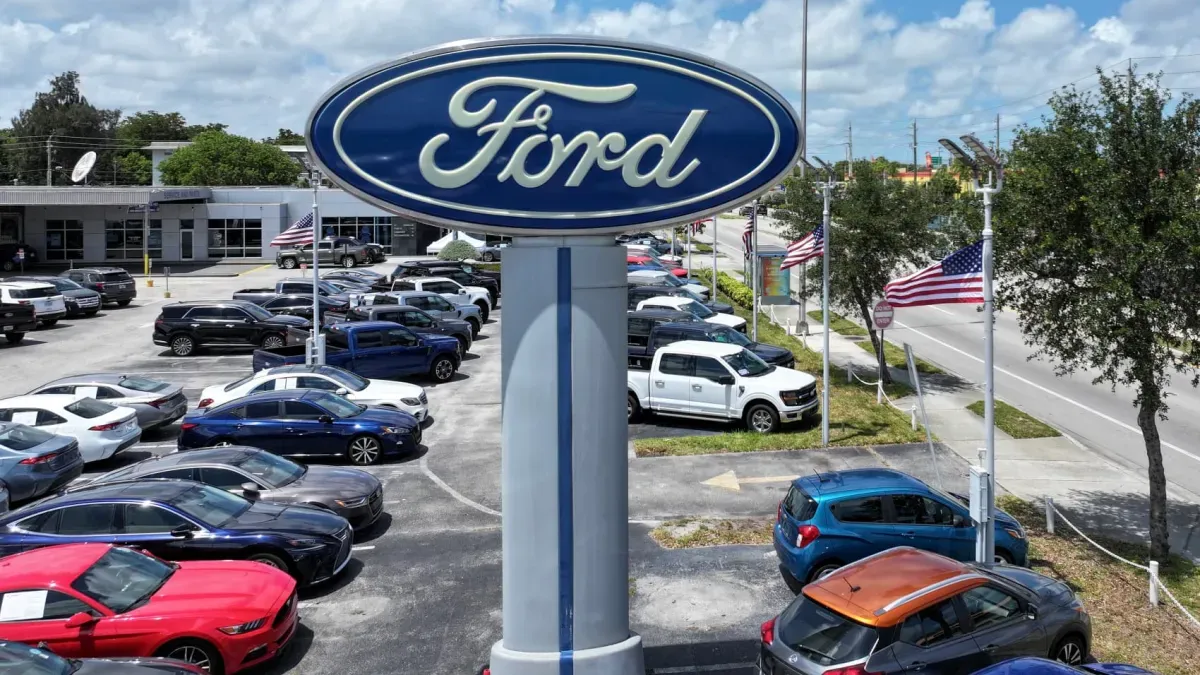Ford Sales Surge 14% in Q2 2025, Exceeding Forecasts Amid Robust EV Demand
Ford sales jumped 14% in Q2 2025, surpassing forecasts as electric vehicle and truck demand surged.

Automaker reports better-than-expected second-quarter sales, powered by strong demand for electric vehicles and resilient consumer interest in SUVs and trucks.
Ford Motor Company has reported a substantial 14% jump in vehicle sales for the second quarter of 2025, surpassing Wall Street forecasts and signaling robust consumer demand across electric, SUV, and truck segments. The company’s announcement, released Tuesday, highlights Ford’s ongoing momentum in the U.S. auto market, despite lingering economic uncertainties and industry headwinds.
Ford Reports Double-Digit Growth in Q2 Vehicle Sales
Ford’s Q2 total vehicle sales reached 565,988 units, marking a significant improvement from the previous year, according to data published by the company . Analysts had projected a more modest increase, but Ford’s outperformance was largely attributed to higher production levels, appealing product lineups, and particularly strong results in its electric vehicle (EV) and truck categories.
"Ford’s strategy to expand its electric lineup and invest in manufacturing is paying off," said Analyst Erica Johnson from Autotrends Research. "They’ve succeeded in attracting both traditional buyers and new EV customers."
Robust Demand for Electric Vehicles Spurs Growth
One of the key highlights from Ford’s second-quarter results was the accelerated sales of its electric models, including the Mustang Mach-E and F-150 Lightning. Ford reported an 18% increase in EV sales compared to Q1 2025, citing growing consumer interest and improvement in supply chain conditions.
"The demand for electric vehicles continues to exceed our expectations," noted Andrew Frick, Ford’s vice president of sales. "We’re ramping up production to meet customer needs and anticipate further growth throughout the year."
According to company data, the F-150 Lightning posted its highest quarterly sales since launch, solidifying Ford’s position as a leader among legacy automakers in the U.S. EV transition.
Truck and SUV Segments Remain Resilient
While Ford’s EV division drew considerable attention, its core truck and SUV segments also contributed heavily to the quarterly gains:
F-Series: The perennial best-selling F-Series lineup saw a 12% year-over-year increase, driven by business and commercial fleet orders as well as steady consumer demand.
SUVs: Sales of the Ford Explorer and Bronco surged, with the Bronco recording a notable 22% sales rise, capitalizing on ongoing popularity among adventure vehicle buyers.
Ford credited increased inventory, new model launches, and targeted marketing campaigns for the overall boost in these segments.
Economic Backdrop and Market Context
Ford’s second-quarter surge comes amid a complex economic landscape for the broader automotive sector. While higher interest rates and inflation have posed challenges, U.S. auto demand has remained surprisingly strong in 2025, especially for brands with a deep lineup of trucks, SUVs, and EVs.
Automotive market data show an industrywide shift, with EV sales now capturing nearly 13% of total U.S. new car sales, up from 10% in 2024 (according to Cox Automotive). Ford’s aggressive investment in EV technology and expanded production capacity, particularly at its Michigan and Tennessee plants, have positioned it to capitalize on this trend.
Expert Perspectives and Industry Reactions
Industry observers say Ford’s strong results reflect the brand’s dual approach: investing in future-facing electric models while maintaining leadership in conventional categories.
"Ford is threading the needle by giving consumers choice—between ICE [internal combustion engine] and EV models—while gradually transitioning its portfolio," said Mike Ramsey, automotive analyst at Gartner.
On the financial markets, Ford shares rose over 3% Tuesday morning following the sales announcement, reflecting investor confidence in the automaker’s direction and operational execution.
Challenges Ahead and Outlook
Despite the upbeat results, Ford acknowledged that challenges persist. Supply chain bottlenecks, especially for specialized EV components, and ongoing uncertainties in global trade could impact production. Nevertheless, Ford reaffirmed its full-year outlook, expecting double-digit sales growth and a further ramp-up of EV manufacturing by year-end.
Looking forward, the automaker is set to introduce revamped versions of its Escape SUV and an all-new midsize electric crossover in Q3, both expected to bolster sales momentum.
Ford’s better-than-expected Q2 performance underscores the automaker’s resilience and its growing clout in the evolving electric vehicle market. As consumer interest in EVs accelerates and core models remain strong, Ford appears well-positioned for continued growth despite industry volatility.
Sources Used in Research:
CNBC – Ford sales jump 14% in second quarter, exceeding forecast
Cox Automotive market data reports (2025)
Ford Motor Company official Q2 sales release
Analyst commentary from Gartner and Autotrends Research



